Mushrooms - a wonderful culinary product, successfully used for cooking various dishes. The most popular mushrooms are mushrooms with a white hat and a white leg. However, almost all species have doubles, so you need to be able to distinguish edible mushrooms from inedible, poisonous ones.
The main types of mushrooms, which are based on the criterion of edibility, include:
- edible;
- conditionally edible;
- inedible.
Let us dwell on the representatives of these species in more detail.
Content
Edible types of mushrooms on a white leg with different hats
The descriptive characteristics of edible varieties of mushrooms on a white leg with different hats will help to understand their variety and choose the desired mushroom, which has a wonderful taste and has a unique mushroom aroma.
With white
The most popular mushrooms on our table that fit this description are champignons. There are several types of fruits.
- Ordinary. They are found in nature in spring and autumn, and with artificial cultivation they bear fruit year-round. The plate head with a circumference of 15 cm and the compacted leg of the mushroom are white, which is the hallmark of this variety. Young representatives have bent hat edges. The plates eventually acquire a deep dark color. Although champignon, when cut, emits a pleasant aroma, it does not have brightness or a rich smell.
- Forest - representatives of coniferous forests with an active growth period from July to the beginning of the first frosts. Under normal weather conditions, in the summer new fruits grow in one place every 2 weeks. Forest champignons have a large hat and a long leg (up to 20 cm). In young representatives, the cap is finely scaly, ovoid.
As it grows, it spreads and becomes brownish-brown, flat, with a dark spot in the middle. The inside of the hat is lamellar, whitish-pink. After the maturation of the fungus, it darkens almost to black.
- Field successfully grows in fields, in parks. Outwardly, the mushroom is practically no different from the usual one, however, it has a larger hat (20 cm) in a yellowish tint. The leg is 3 cm thick and grows up to 10 cm in height. This variety of champignons is distinguished by the incredible aroma of anise and nutmeg inherent only to this mushroom.
With brown
Mushrooms with a brown hat, as a rule, are highly rated by mushroom pickers. They have a dense, tasty pulp with a bright, rich mushroom aroma. Among them, the edible include:
- Boletus edulis is one of the remarkable representatives of edible mushrooms with a light brown convex cap of spherical shape. The pulp is dense, in the context does not change color. The mushroom grows on clean forest sandy glades almost all summer. It is considered a gourmet product.
- Boletus - a large tubular mushroom with a fleshy hat richly brown in color, massive white leg. It grows mainly in deciduous forests. It has a high level of nutritional value.
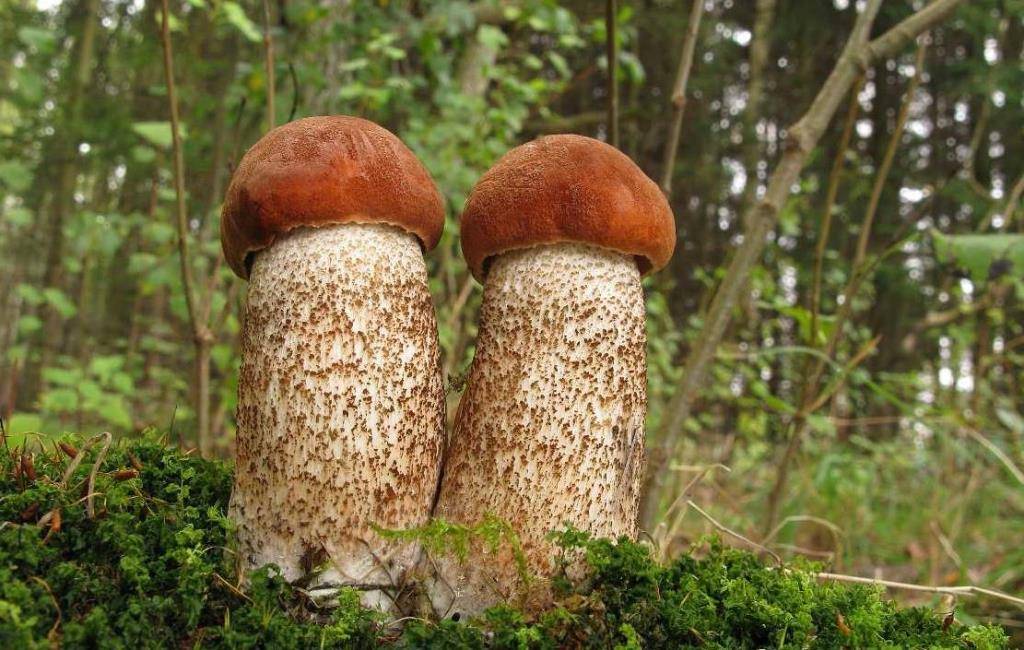
Boletus - Bread - a large mushroom with moisture-retaining properties, grows mainly in coniferous forests with sandy soil. The diameter of the cap is 20 cm, and the thick and dense leg is almost equal to its width. Due to its taste, it is used for the preparation of a variety of sauces.
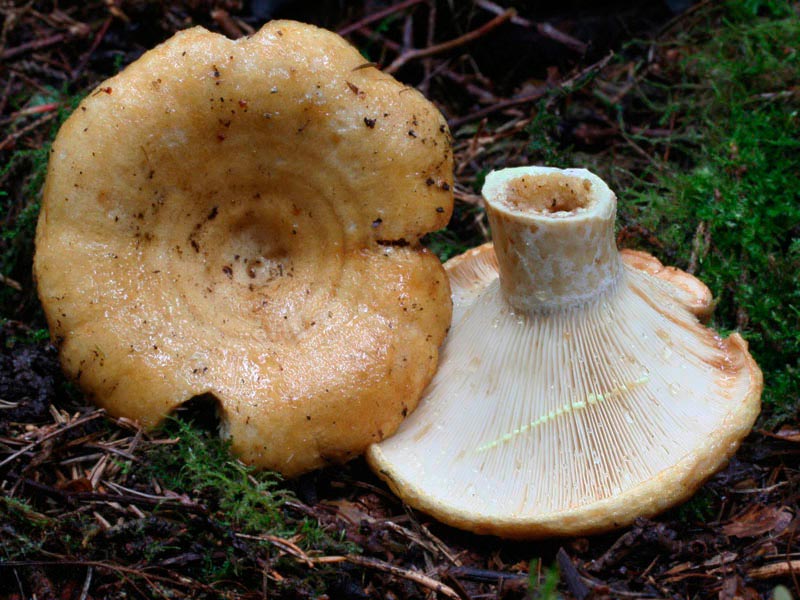
The breast - Butterflies are bright representatives of coniferous forests with a tubular cap of a convex shape, covered with a small layer of mucus, which gives the mushroom a beautiful shine. The thin leg bends as the plant grows under the weight of the hat. They are used in any form: pickled, fried, in sauces.
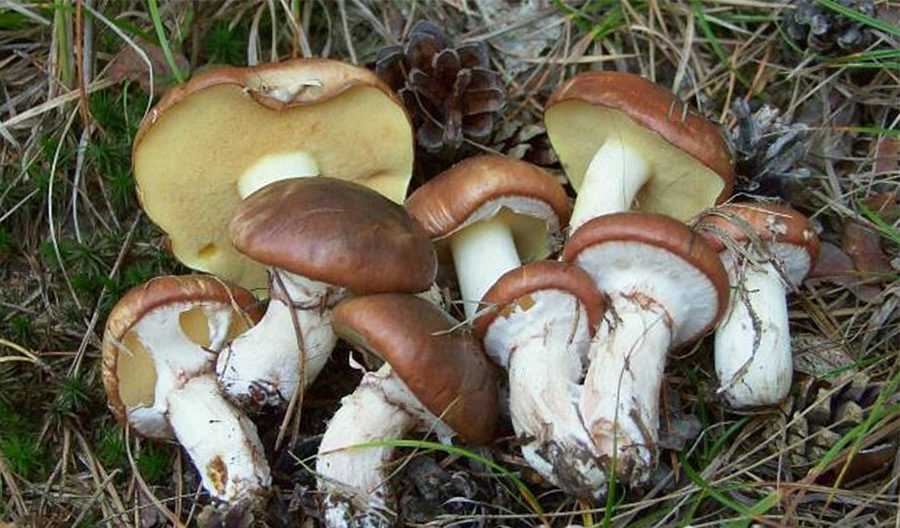
Butter - Honey mushrooms grow in groups on stumps or near deciduous trees. Each mushroom is small in size. The young mushrooms have light brown hats, somewhat convex in shape, and the old ones have flat hats.
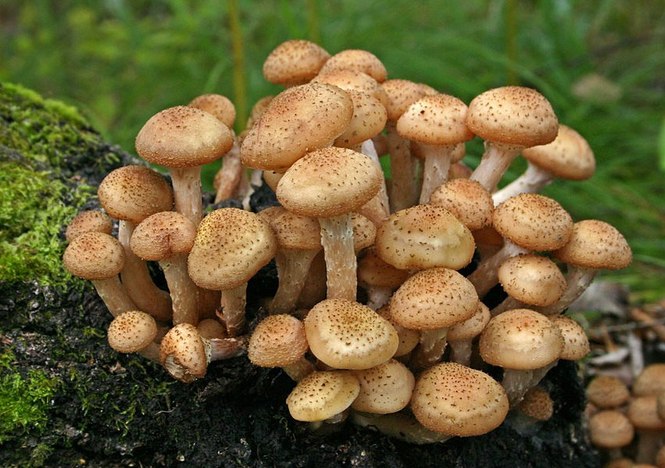
Mushrooms - Truffles are a delicate product with a hat of dark brown color, grow underground, so it is very difficult to collect them. They are mainly found in the rhizomes of oaks or pine trees in old forests.
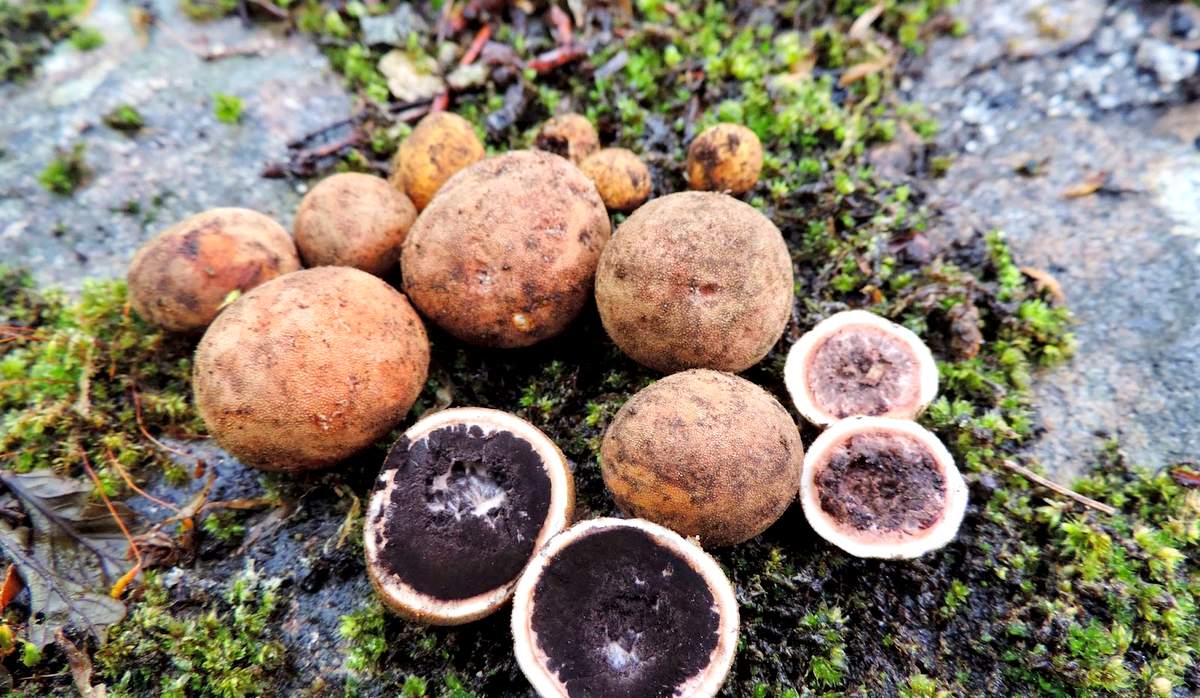
Truffle - Collibia oil has a wide convex light brown hat with a depressed middle. With high humidity, the hat changes color to dark brown with a red tint. The leg is long and thin, hollow inside. Milky flesh with good taste.
- Common milkwort grows in oak forests. A light brown hat of a flat shape, fleshy flesh, which darkens when cut, forming a light juice. The sweetish taste is suitable for the preparation of many dishes, including sauces, salting, pickling. Fresh fruits have an unpleasant odor that disappears after heat treatment.
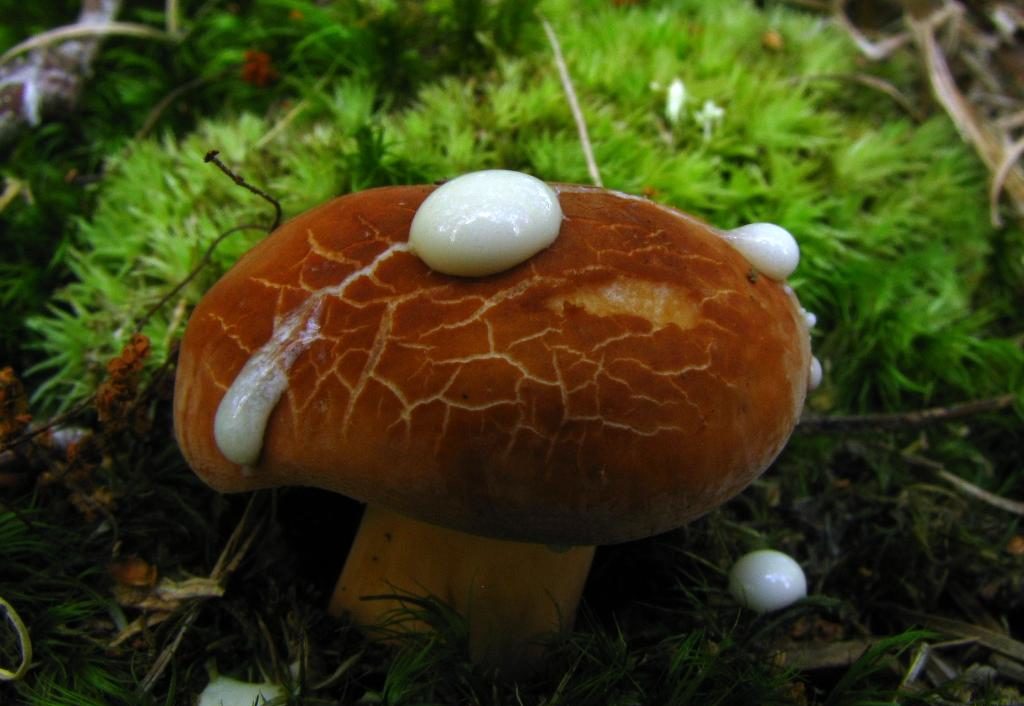
Sub-milkman - Brown oak is common in mixed forests, it has a large brown hat and a dense white leg with yellowness. When damaged, the flesh changes color to blue, after boiling this shade disappears and the mushroom acquires its usual color. To taste it is not inferior to the cep, not subject to worminess.
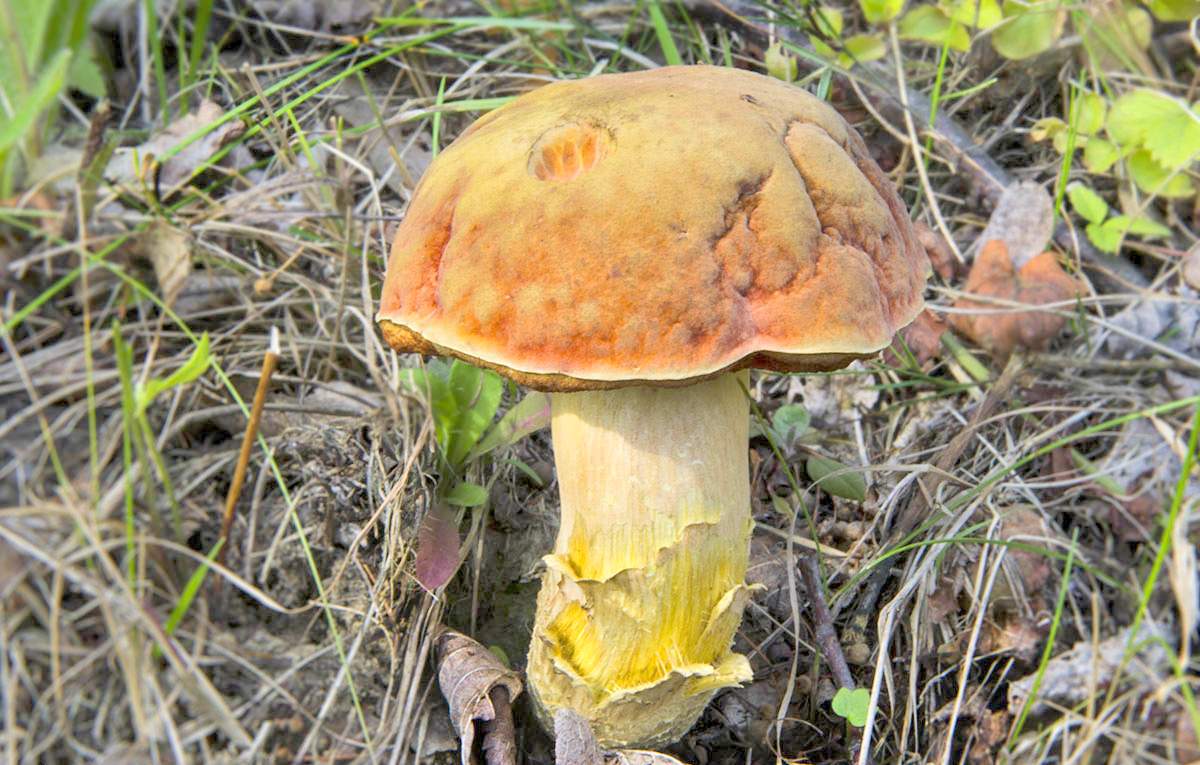
Brown oak
With purple
Mushrooms with a purple hat can be found in forests with coniferous and deciduous trees. Basically, such mushrooms belong to the genus of edible russula. Of these, the brightest representatives of the genus are russula:
- Violet refers to agaric mushrooms. The hat is flat, semicircular in shape with ribbed edges, 3-5 cm in diameter, lilac in color with a slight olive tint. Leg in the form of a club, 3-5 cm long. It may be odorless, but sometimes it emits a delicate fruity aroma. It grows mainly in deciduous forests, where birch, aspen or poplar predominates.
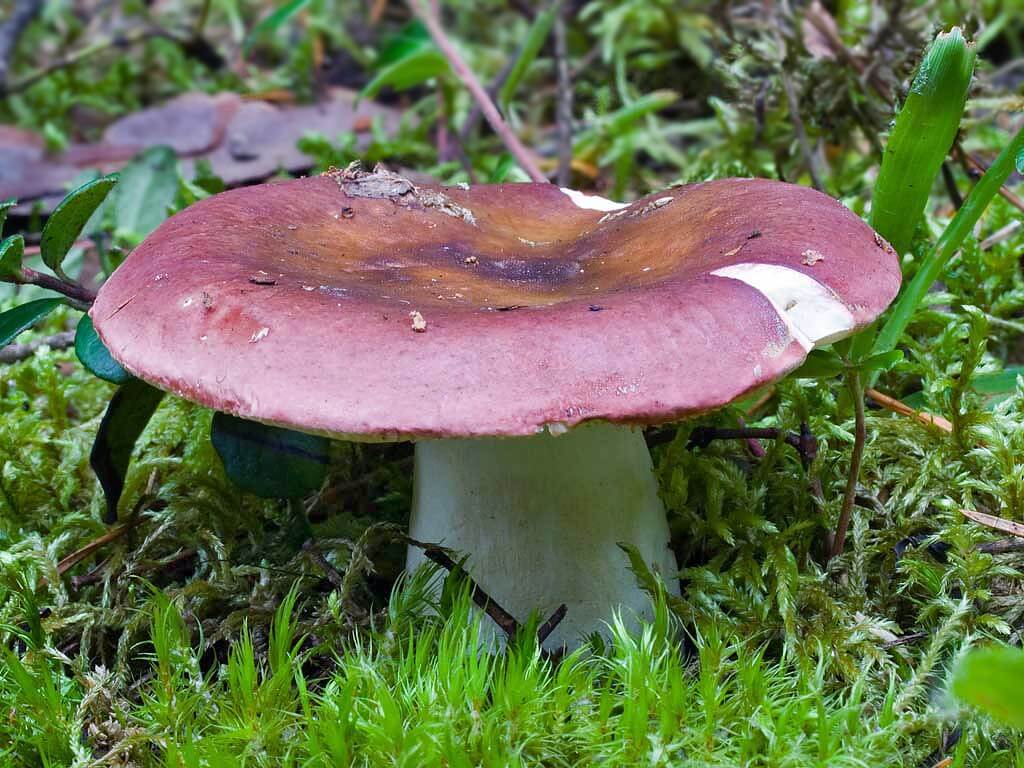
Russula Violet - Violet-legged grows in coniferous or mixed-type forests. The cap is funnel-shaped, 6-10 cm in diameter, cloudy yellow with a purple tint. The lower part is lamellar, cream, with the age of the plate thinning. The leg is not long, cylindrical, narrowed downwards, white, sometimes with a slight pinkish tinge. It has a dense pulp with a pleasant smell and good taste.
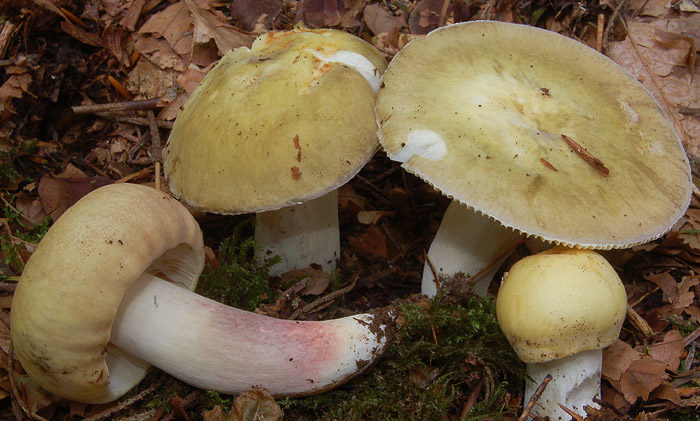
Russula violet legged - Violet-green is distinguished by a dark purple glossy color of the hat with a greenish tint, which reaches 14 cm in circumference, has a convex-concave shape with uneven edges. The central part of the hat is almost all green. The plates are wide, rare, yellow with age and acquire a greenish tint. The leg has a small length (3-4 cm). The flesh turns pink when damaged. Flavourless mushroom with fresh taste. It grows in forests next to conifers and oaks.
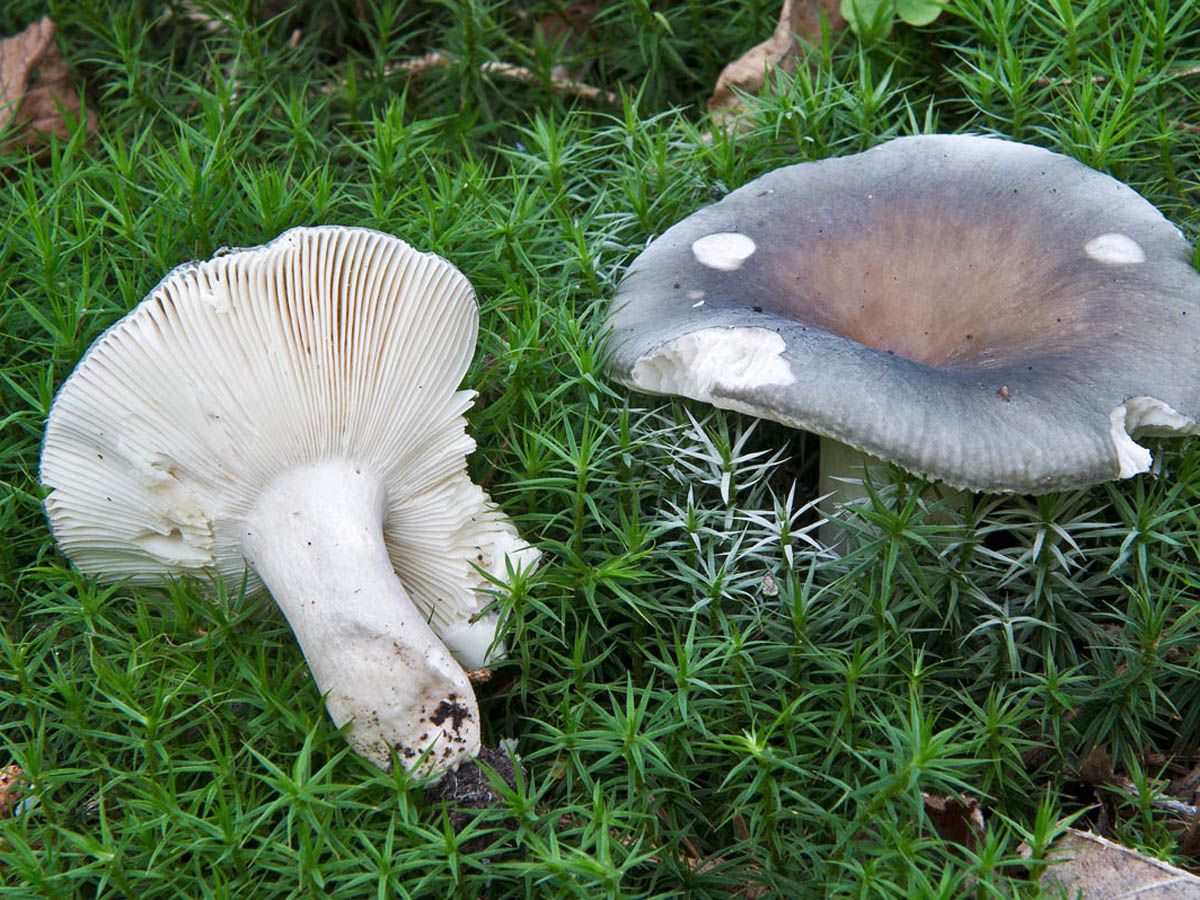
Russula violet-green - Purple in shape and appearance is distinguished by a dark purple hat and fragile flesh. Experienced mushroom pickers collect them in mixed or deciduous forests.
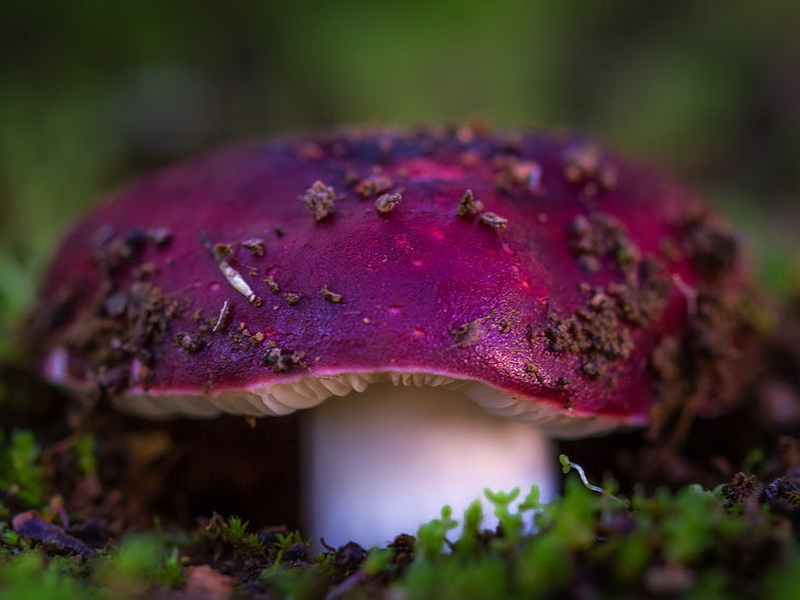
Russula lilac - Brown-violet has a dense flesh. Hat 10 cm in a circle, flat-concave, edges are lilac ribbed. The color is dark purple with a brown center. Young individuals have a black and purple hat. The leg has a fusiform shape, color - white, yellowish down. It is odorless. Prefers birch and coniferous forests.
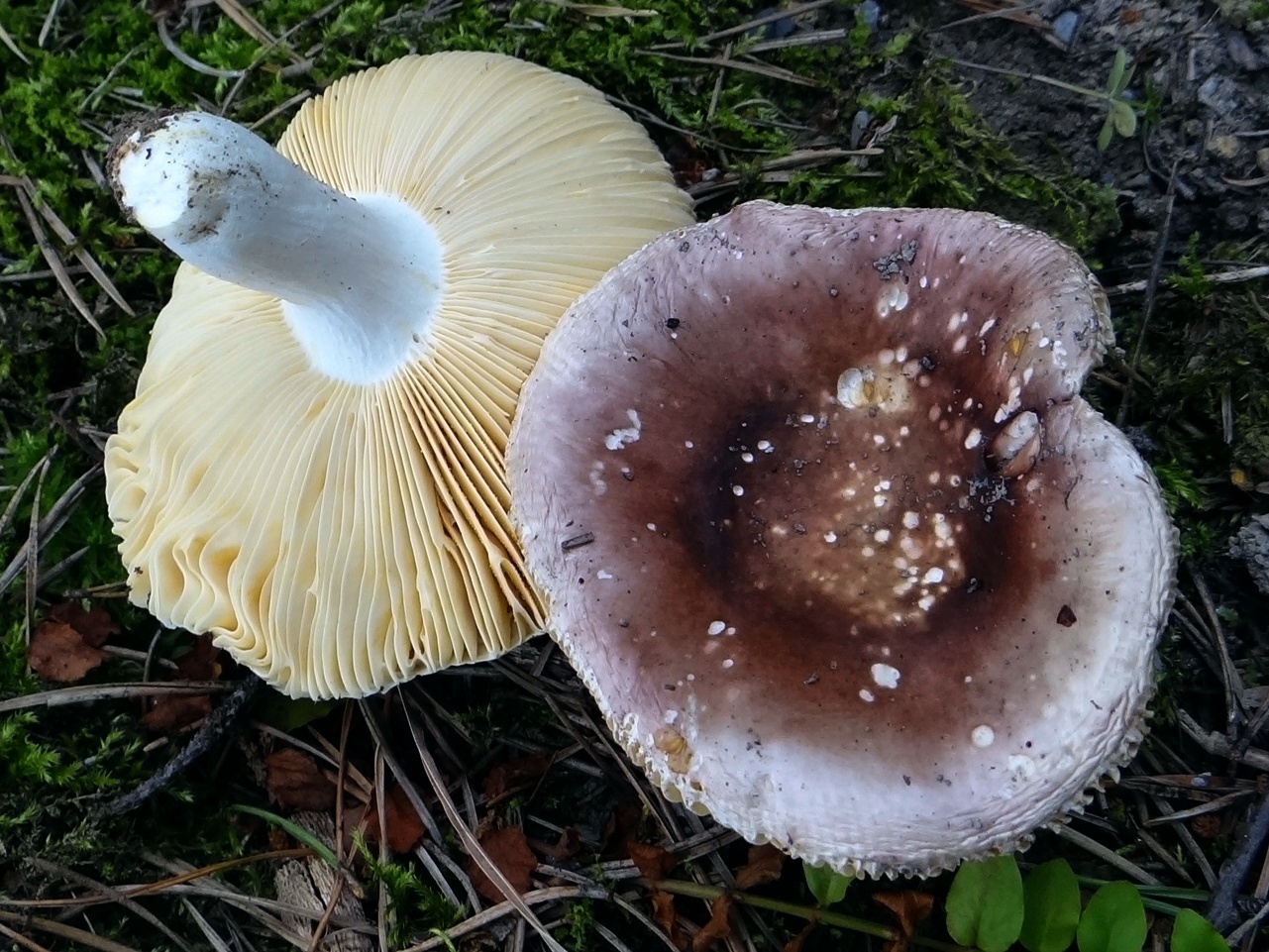
Russula brown-violet - Dark purple grows in coniferous forests, the hat is semicircular, fleshy, the surface of the young mushroom is reddish, with age it is dark purple. The lamellar part is yellowish in color, when dried - orange.Leg in the shape of a cylinder, up to 7 cm long, slightly lighter than the hat in color. The mushroom, when cut, has a light yellow flesh and exudes a slightly unpleasant odor.
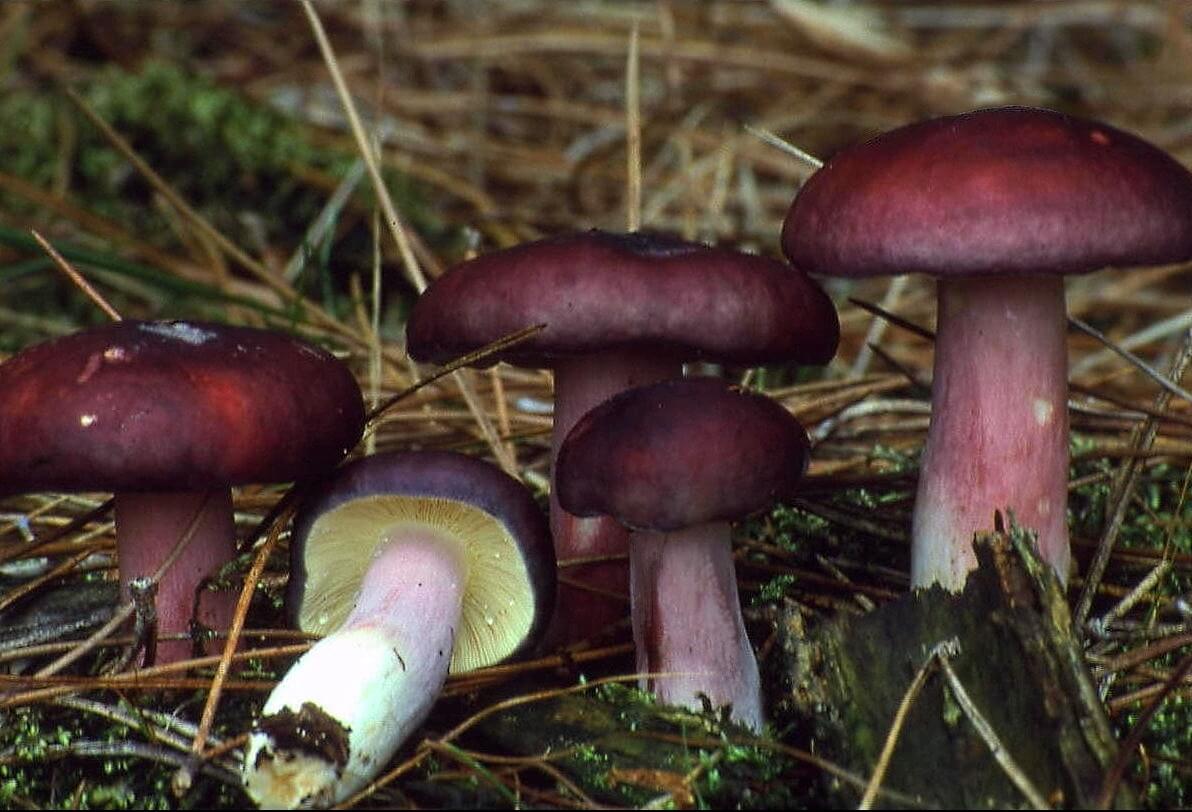
Russula dark purple
With black
Edible tubular mushrooms with a black hat include black boletus. The cap of an adult is pillow-shaped, and reaches 16 cm in circumference. The young mushroom is distinguished by a semicircular hat of a dark color, with age, the color becomes saturated and darker. With high humidity, the surface of the cap is covered with mucus. The inside is tubular, off-white.
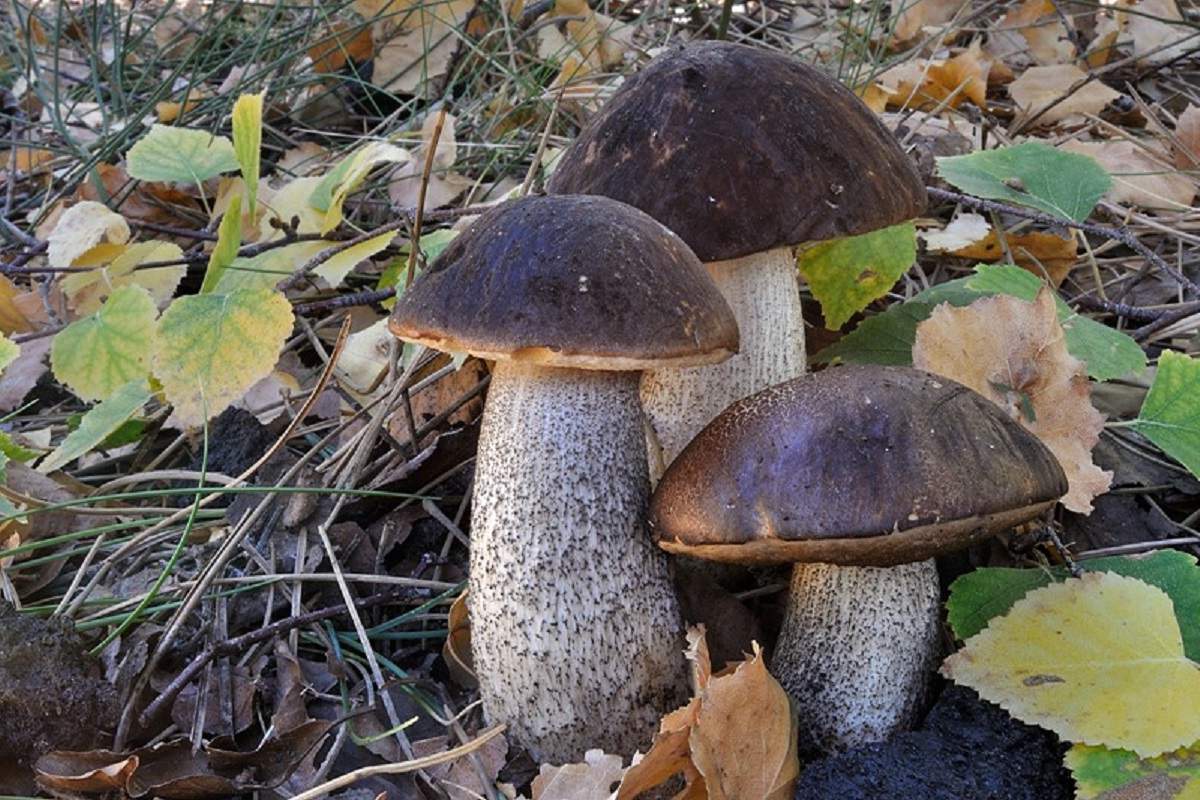
The leg, studded with small scales, has a white color and reaches a length of 12 cm. The flesh is hard, it turns blue with an incision. The mushroom exudes a pleasant mushroom aroma.
Blackhead loves moisture, so the ideal habitat for mushrooms are the shores of lakes, nearby swamps, thickets of moss. Brown birch trees appear in August and their most abundant crop can be harvested in September.
With gray
Mushrooms with a gray hat and a white leg mainly include the following rows.
The edible gray rowing is distinguished by the gray color of the hat with an olive shade, with a diameter of 3-13 cm, in the form of a convex cone. When growing up, the wavy edges of the mushrooms are wrapped up. In wet weather, the surface of the hat is slippery. The leg is quite high - up to 16 cm, thickened downward, white, sometimes with a slight yellow tint. It does not have a pronounced smell.
The pigeon has a grayish hat with wavy edges, 5-12 cm in diameter, may be covered with yellowish spots. Young mushrooms have a hemisphere hat that unfolds over time. Leg (6-11 cm) slightly curved. The pulp is dense, has a powdery smell.
Conditionally edible varieties
Conditionally edible should include:
- Row of purple with a smooth, dense leg, purple hat, reaching up to 22 cm in diameter, in the form of a hemisphere. The edges are bent inward, with the age of the fetus, the hemisphere opens slightly. The surface of the fungus is smooth, without cracks. The mushroom is lamellar, with widely located plates at the bottom of the cap. Leg in height - 12 cm, cylindrical, tapers up.
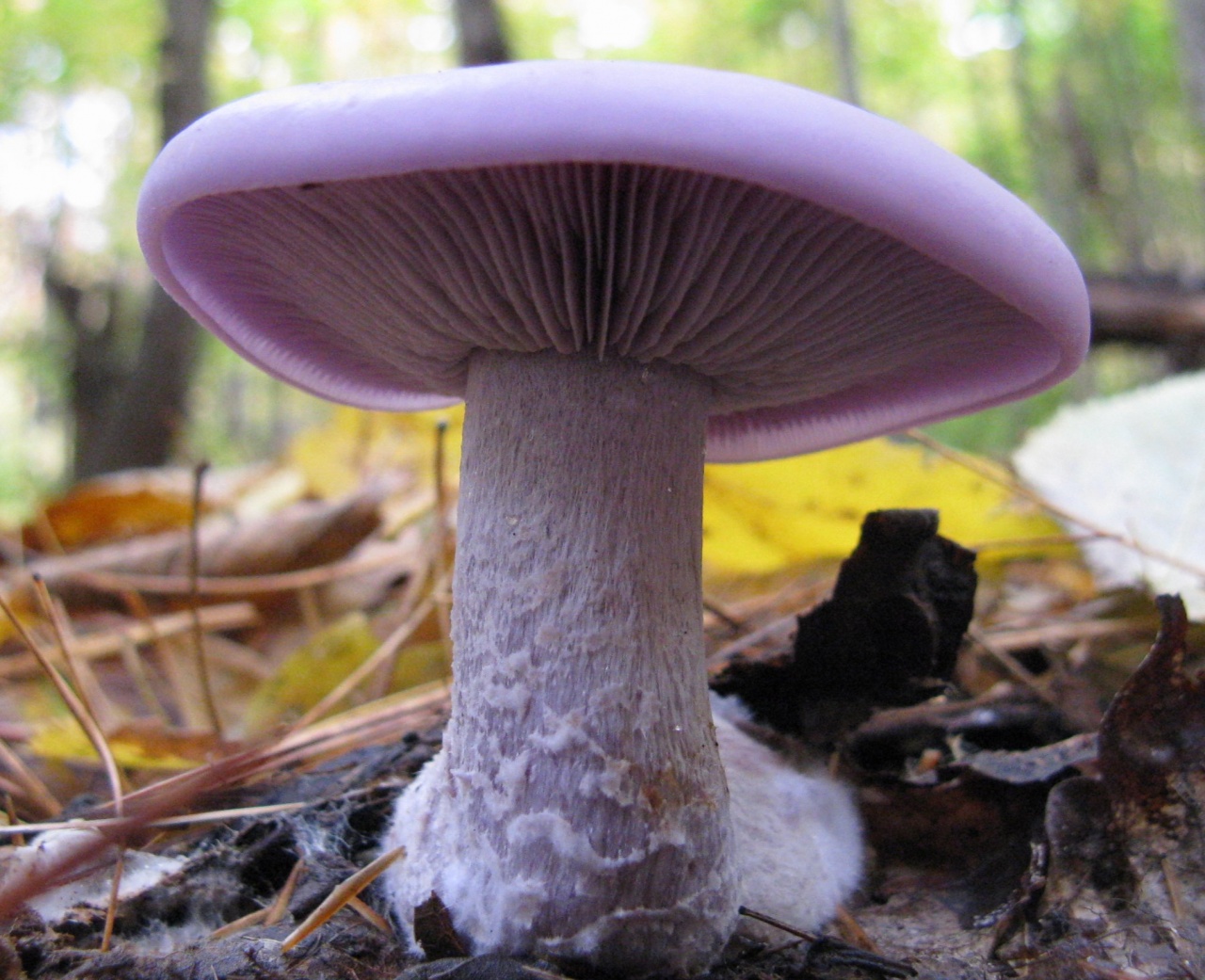
The row of purple - Peppermint has a wide pepper-colored hat with curved inward edges. Young mushrooms are distinguished by the roundness of the cap, which subsequently straightens and becomes almost horizontal. The surface is smooth, slightly velvety. The whitish leg has a height of 10 cm, a dense structure, expands upward. Such mushrooms can be eaten and used for cooking only after thorough heat treatment.
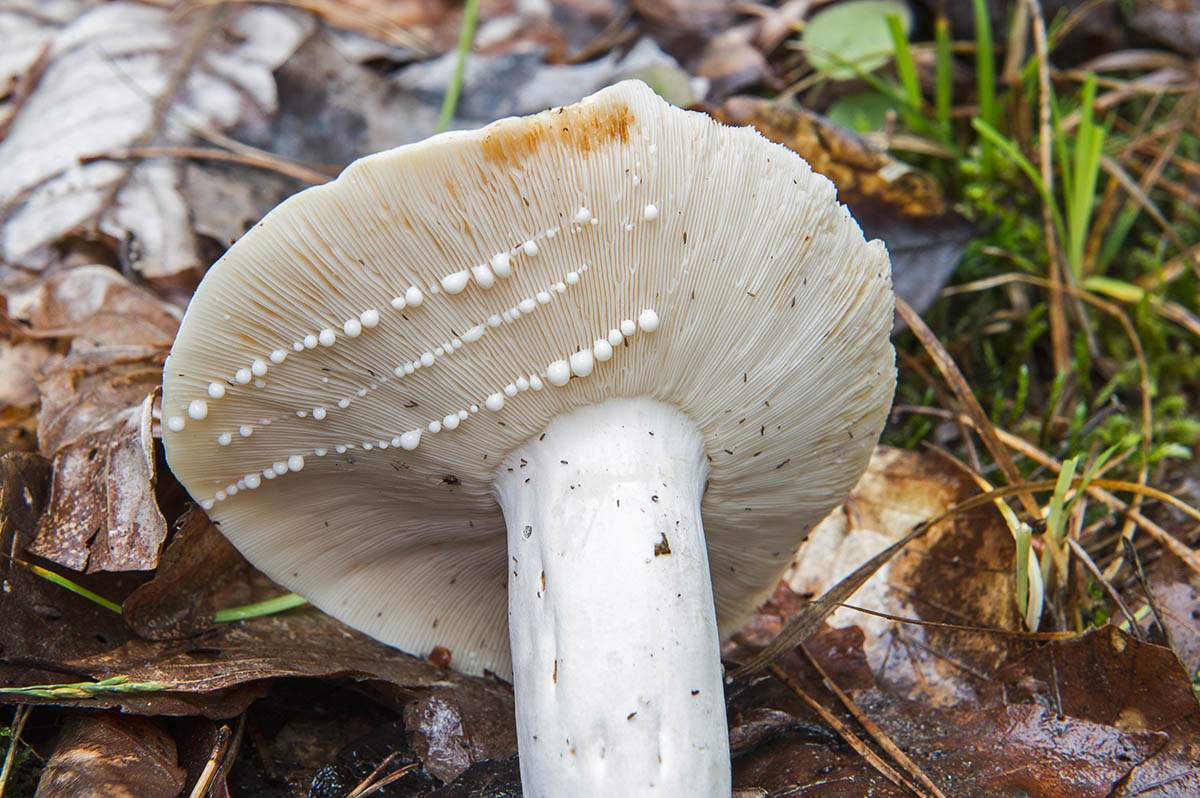
Pepper Miller
Inedible and Poisonous Mushrooms
The collection of mushrooms and their consumption in food, even in small quantities, is a vitally important issue, since mushroom poisoning leads to disastrous consequences, and sometimes to death.
Inedible mushrooms include:
- pale grebe;
- red fly agaric;
- satanic mushroom.
- Strofaria blue-green;
- Paneolus Bell-shaped;
- Goebeloma;
- Variable Pecius;
- Amanita Panther;
- Orange Cobweb;
- The line is ordinary;
- Trametes is multi-colored.
Poisonous mushrooms include:
- poisonous row with a gray hat;
- pale grebe;
- fly agaric;
- Galerine bordered;
- False foal sulfur yellow;
- yellow skin champignon;
- Lepiot is brownish red.
Rules and locations for safe collection
It should be remembered that mushrooms are often disguised as edible or have their own counterparts.Therefore, you should adhere to such rules and places for picking mushrooms:
- If there is doubt about the "correctness" of the fungus, it is better not to take it at all, since you can put your health at great risk.
- If the mushroom is unfamiliar, do not put it in the basket. It can be poisonous and, when cooked together with other mushrooms, can poison them.
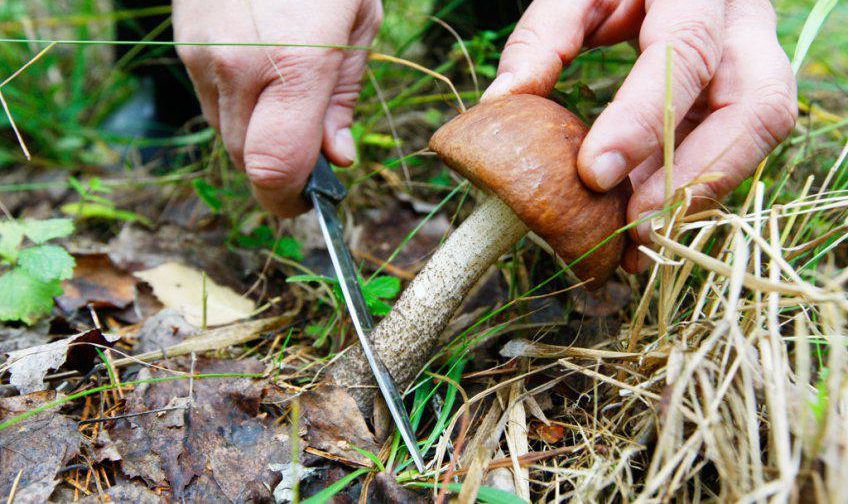
Mushroom picking - It is necessary to collect mushrooms as far as possible from open sections of highways, motorways, factories with harmful production, since mushrooms tend to accumulate harmful chemicals in themselves.
- Care must be taken to monitor the color change of the fungus at the break. Edible species of mushrooms practically do not change color when damaged, and poisonous ones change it.
Answers to widespread questions
There are a lot of mushrooms with white legs, and not all of them are safe among them. Having examined each species, having studied the description, knowing the rules for their collection, we can confidently go to the forest.

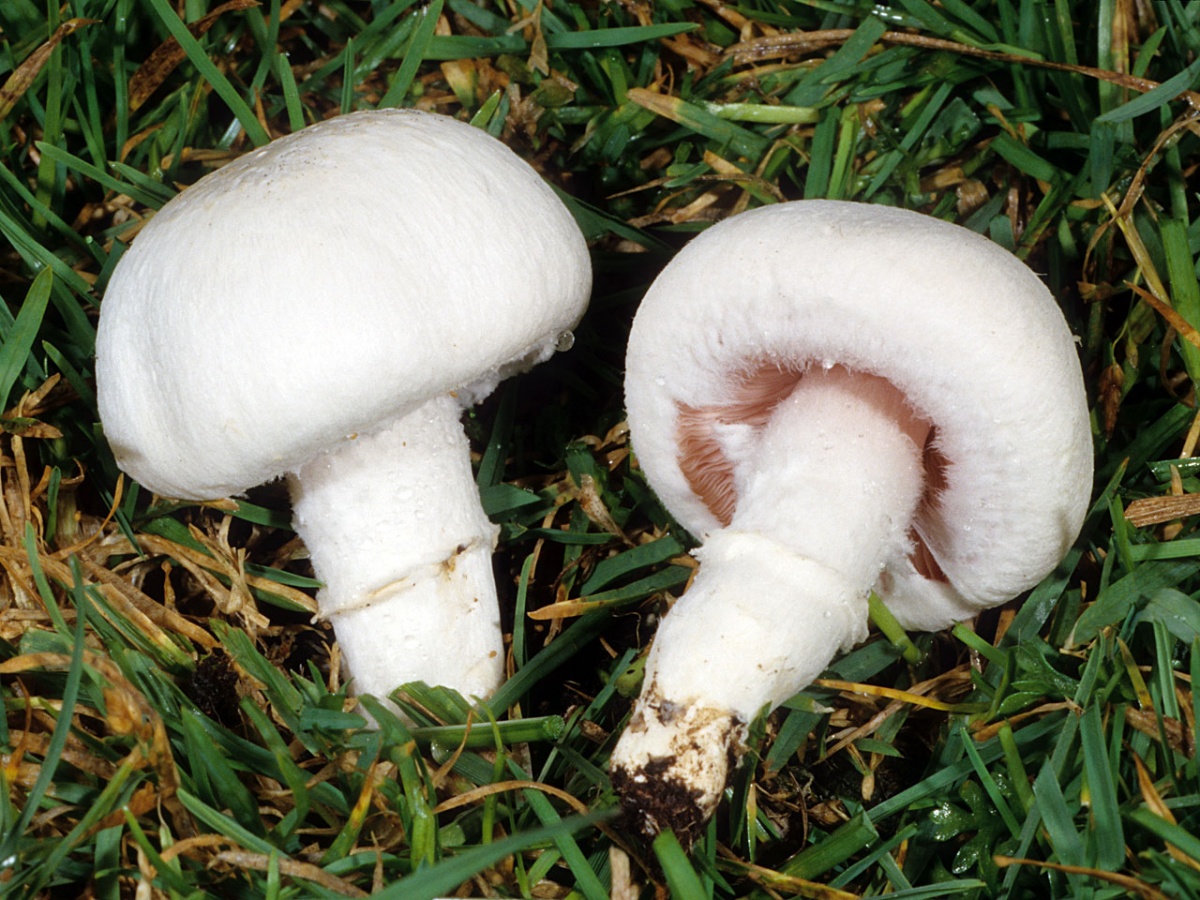
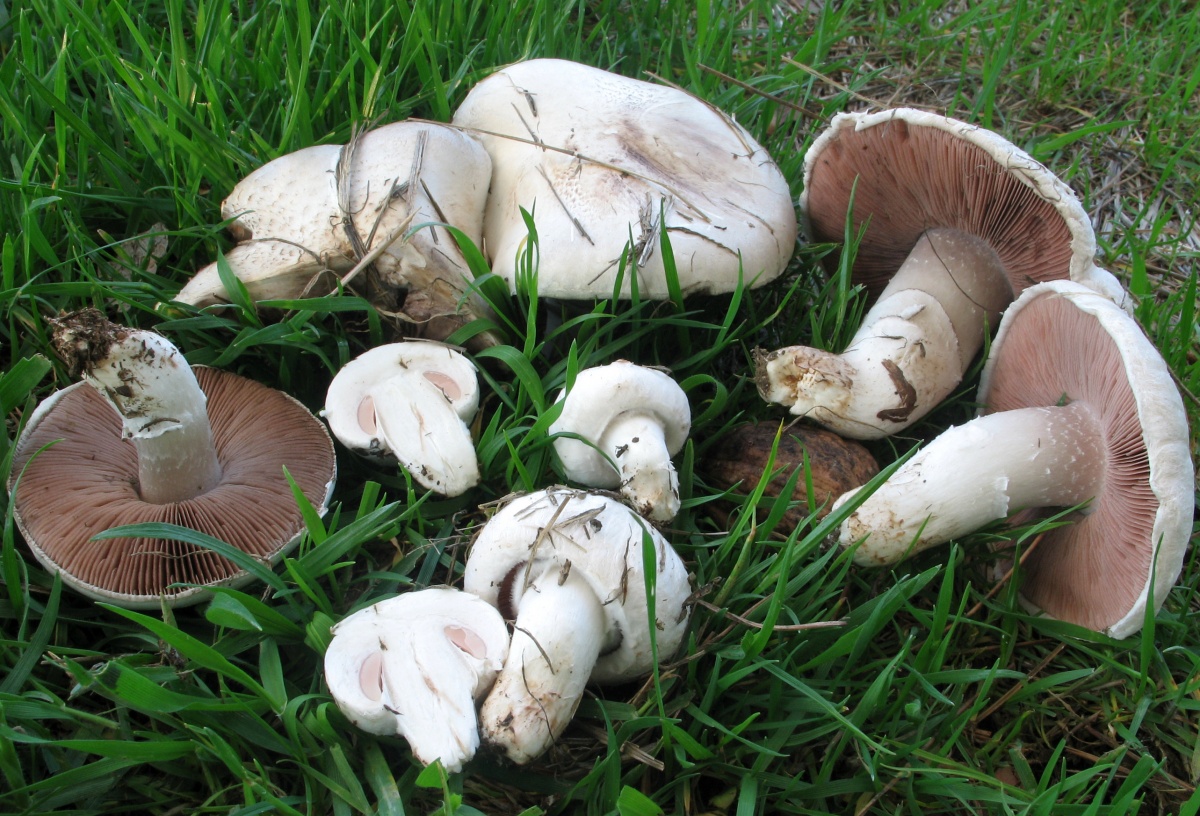
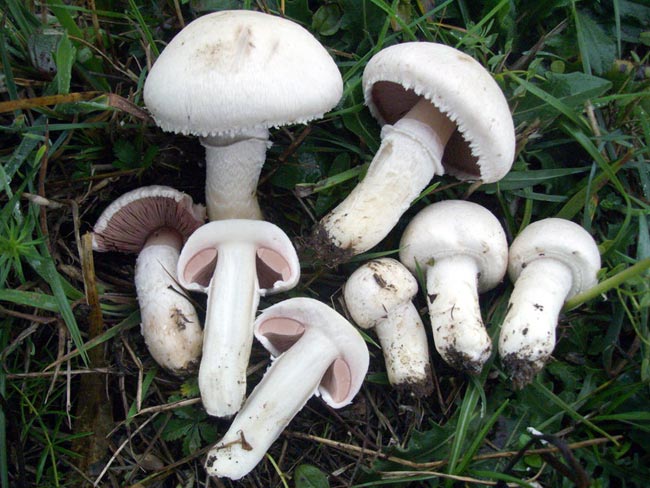
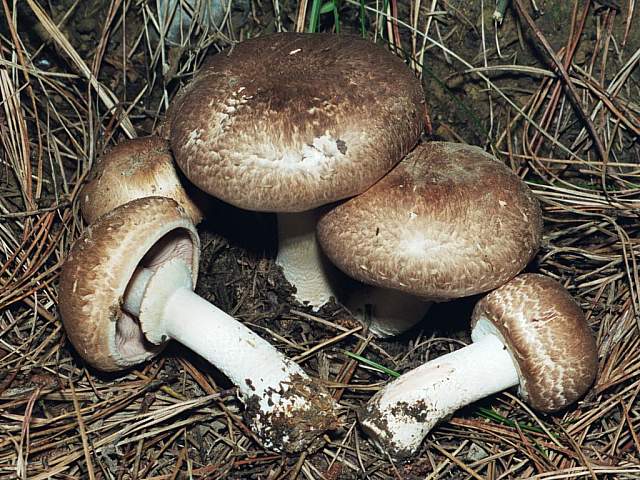
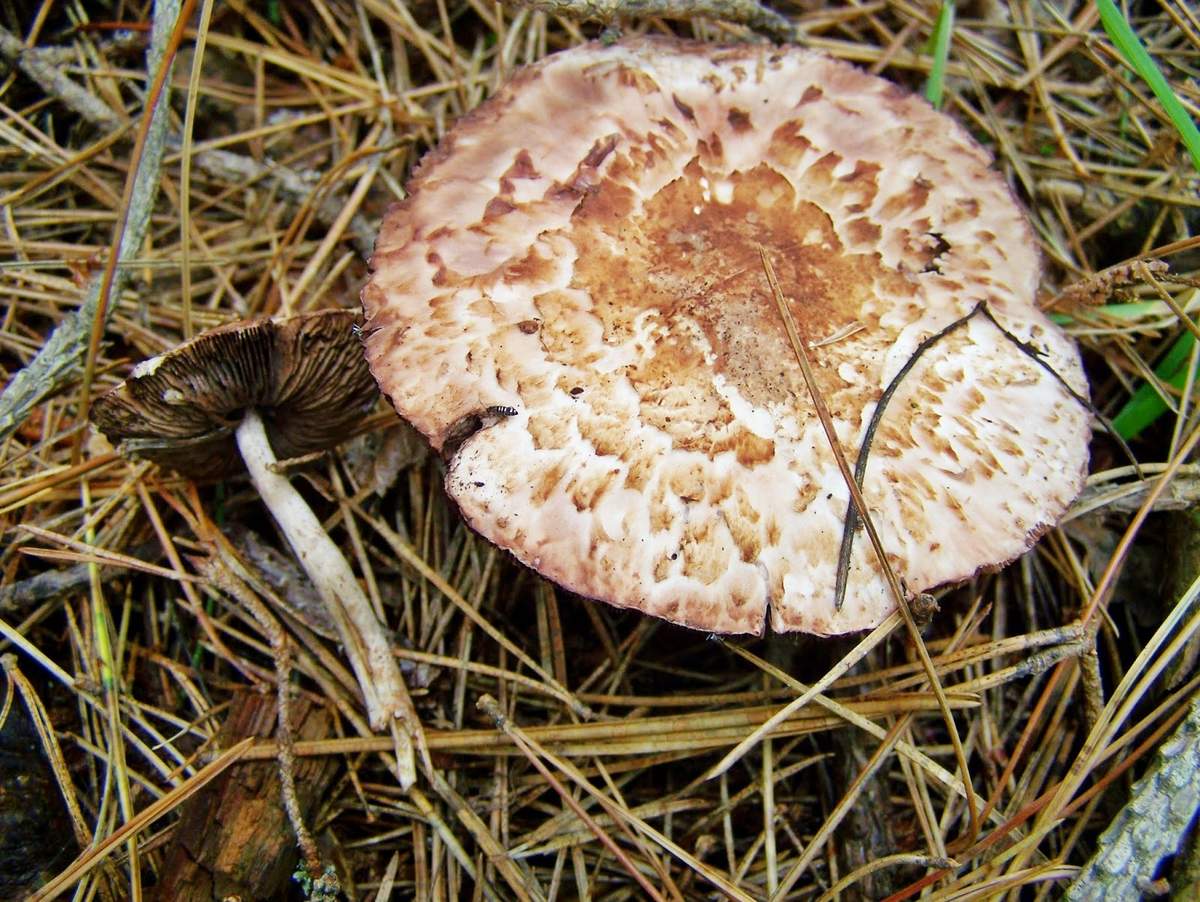
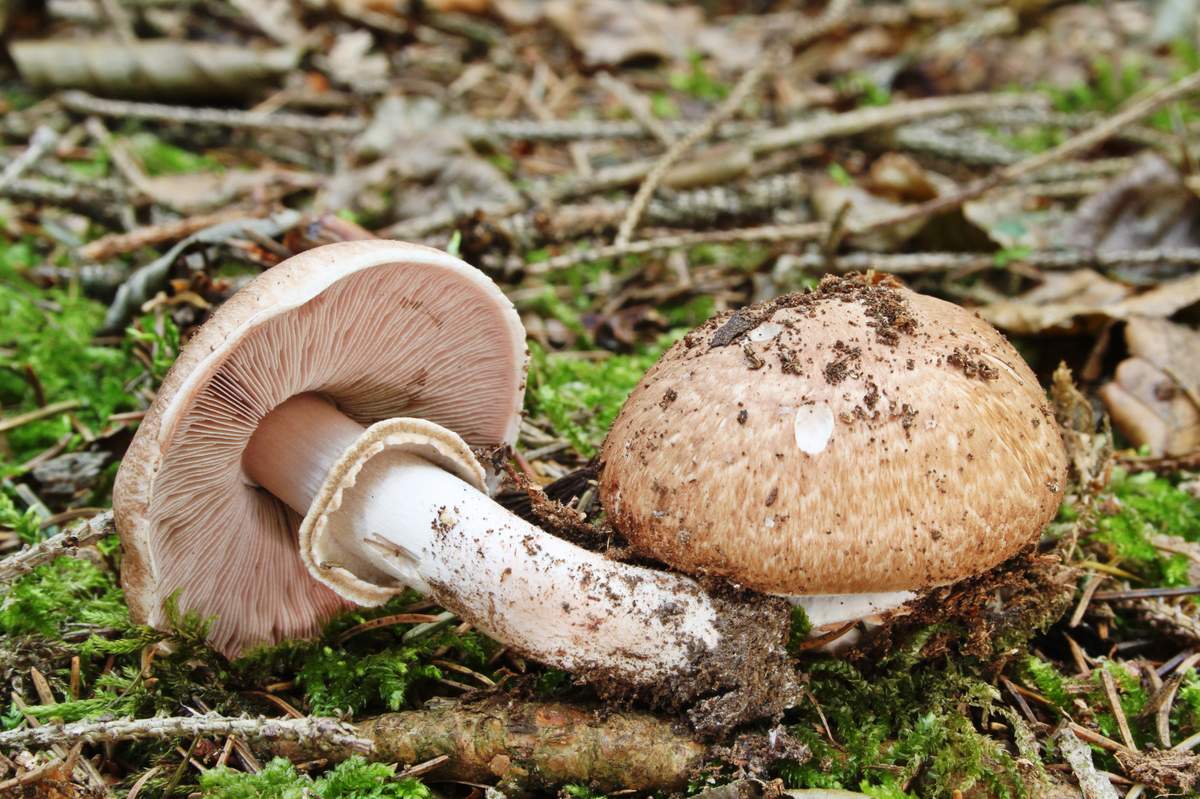

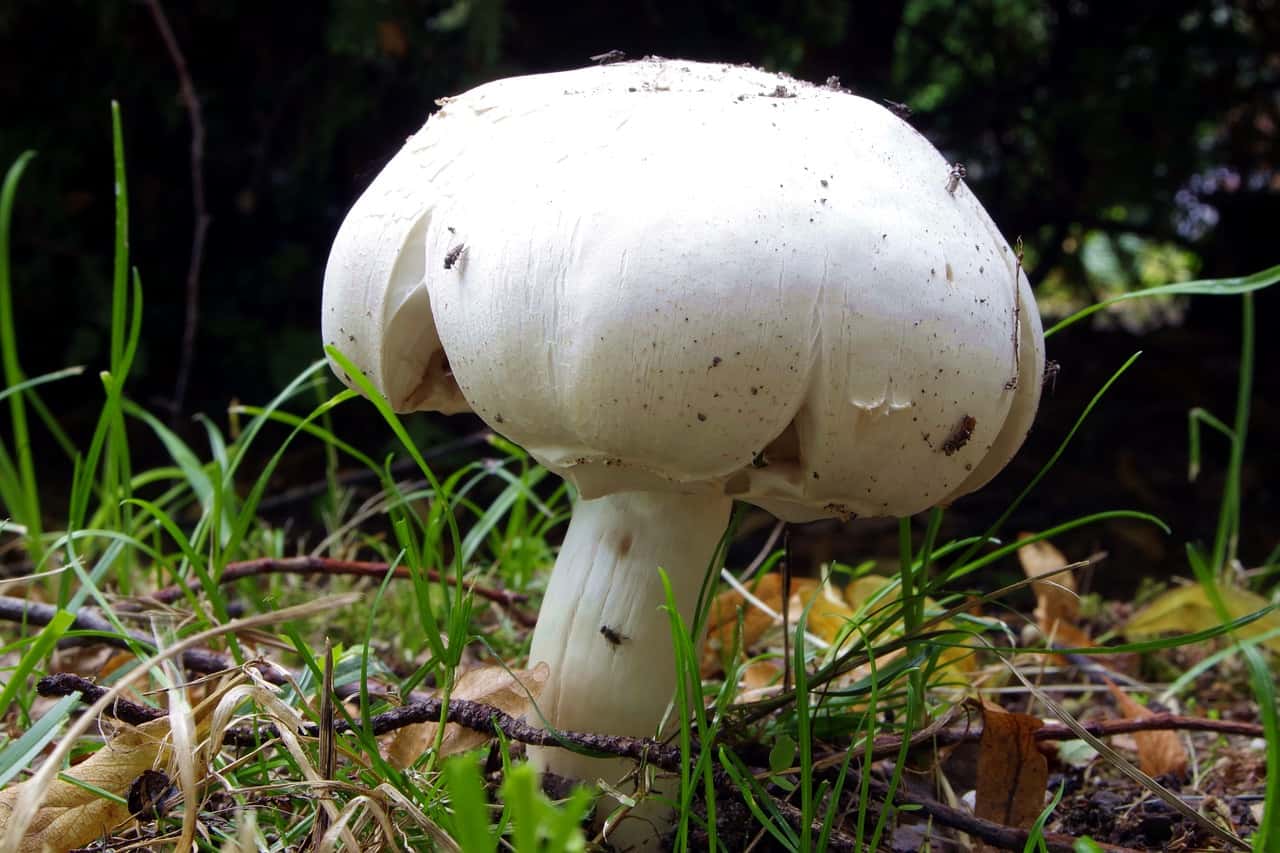
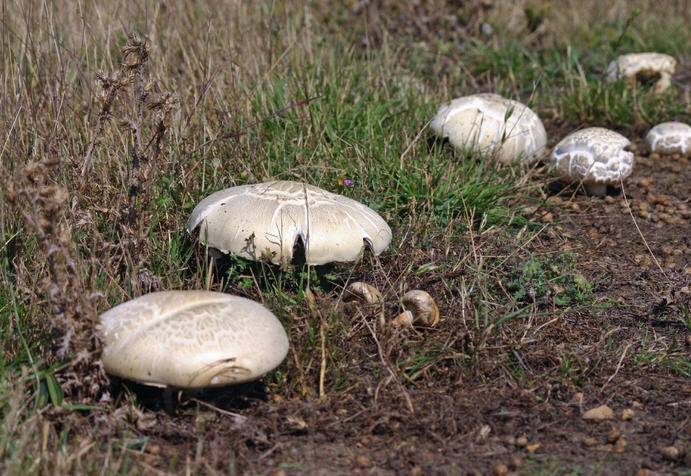
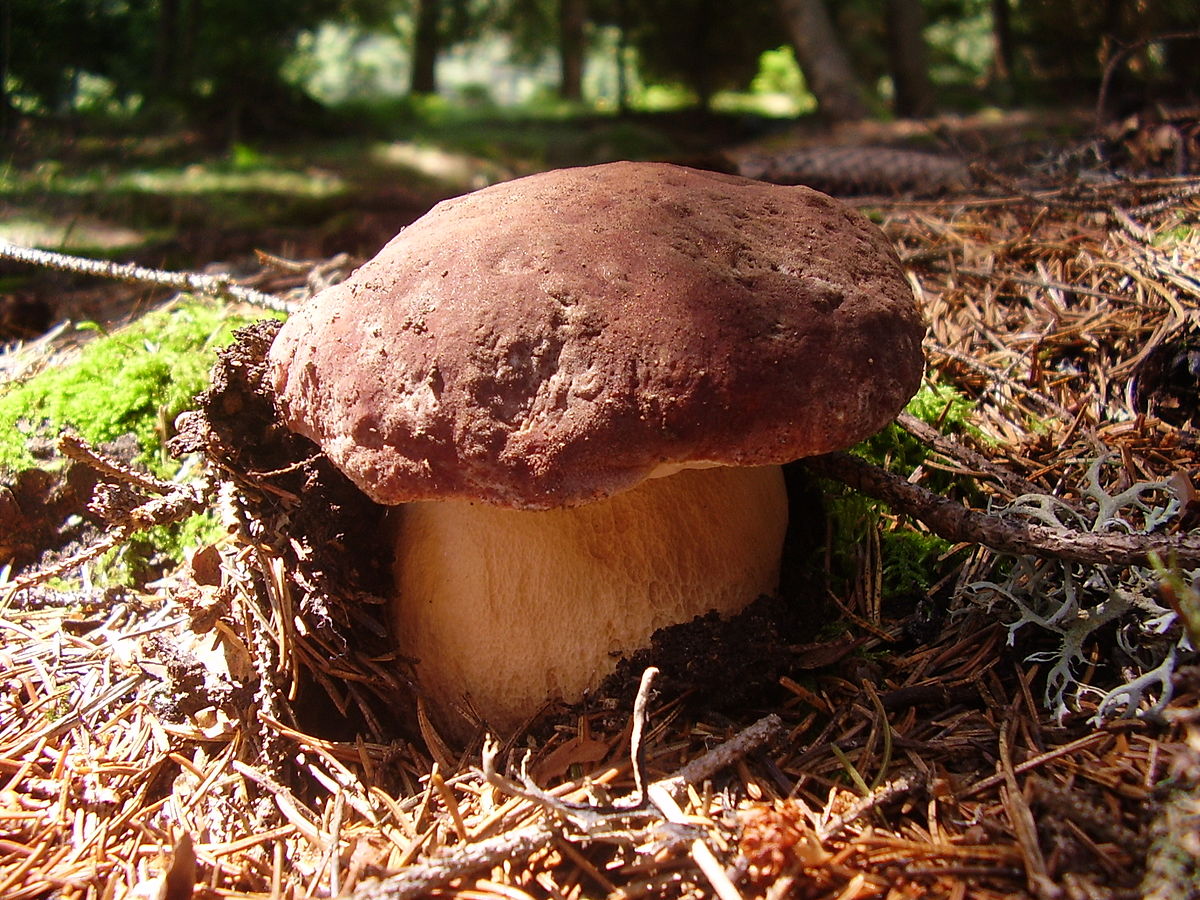
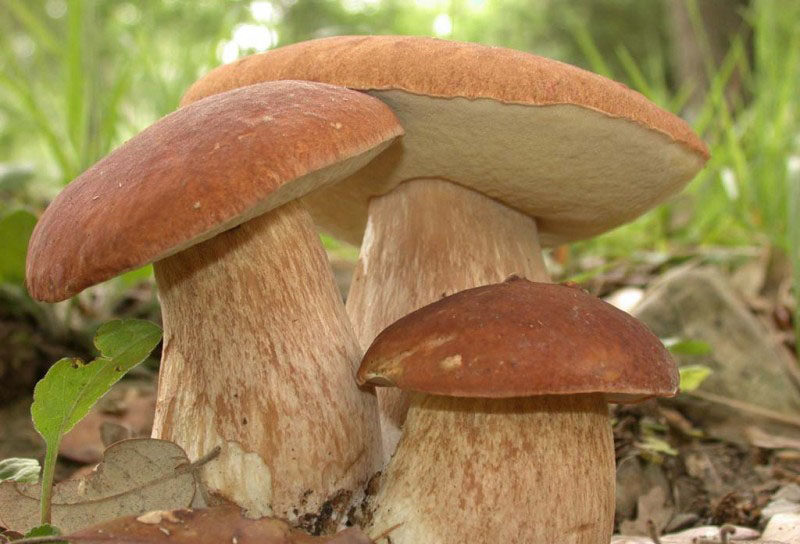
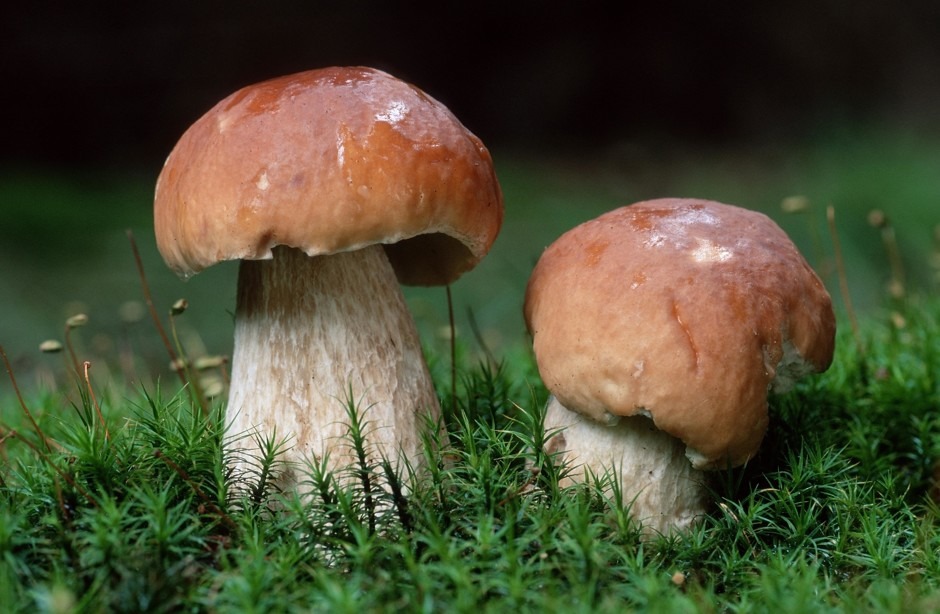
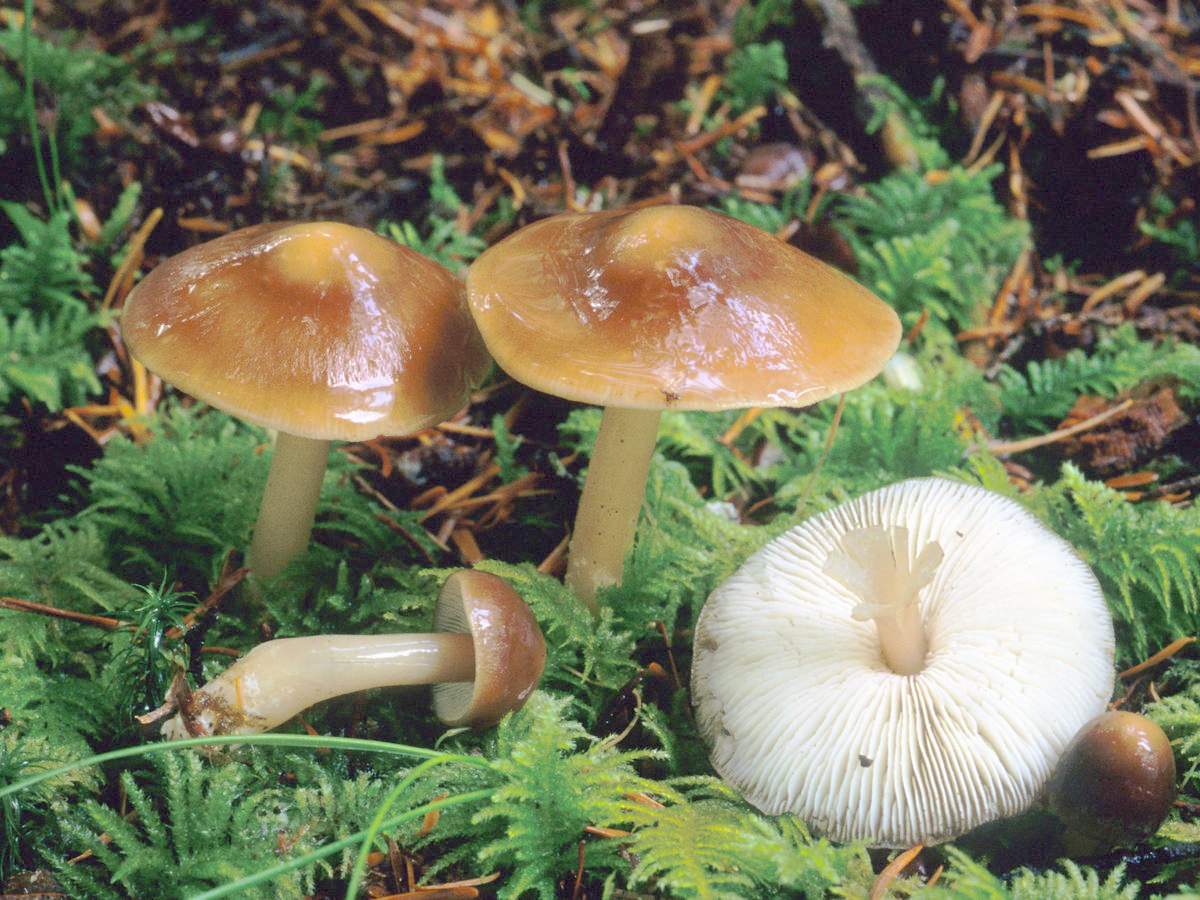
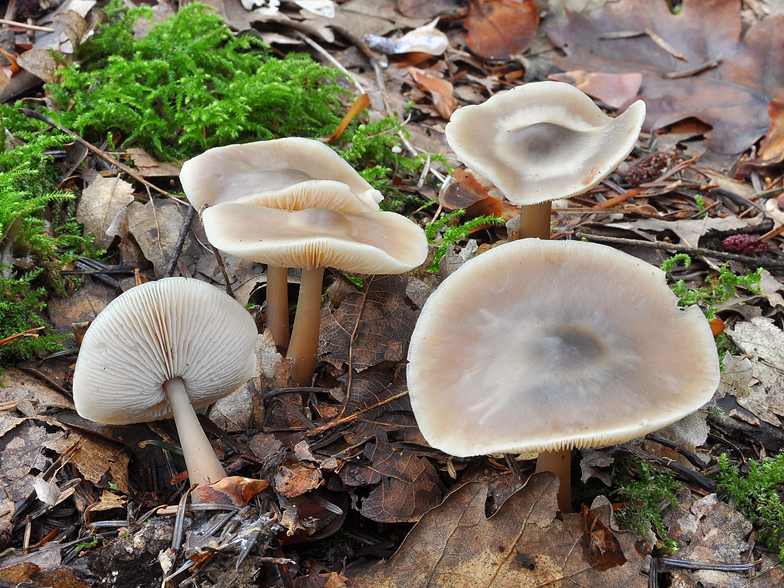
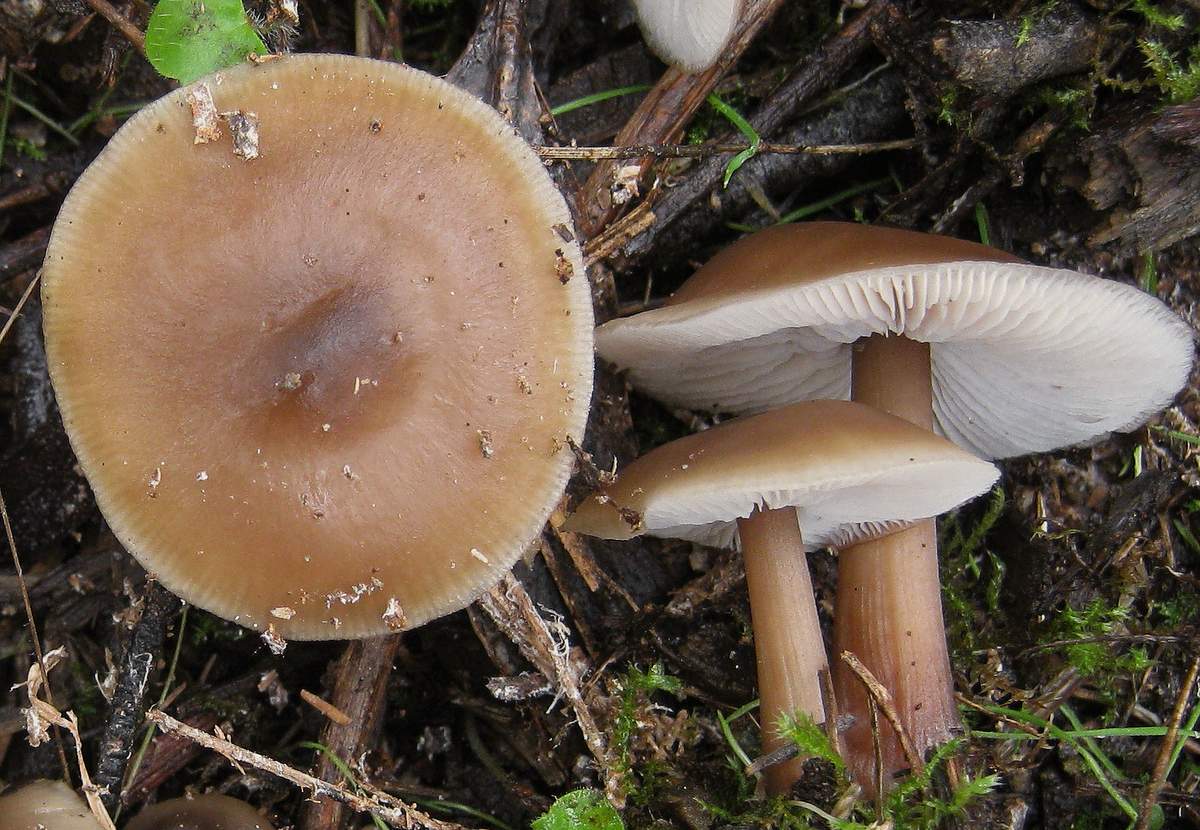



 Care and use of Kombucha at home (+22 photo)
Care and use of Kombucha at home (+22 photo) Edibility of the fungus of the motley umbrella and its description (+19 photo)
Edibility of the fungus of the motley umbrella and its description (+19 photo) Description of edible and inedible oils, their poisonous counterparts (+40 photos)
Description of edible and inedible oils, their poisonous counterparts (+40 photos) Useful properties of milk mushroom and its contraindications (+17 photos)
Useful properties of milk mushroom and its contraindications (+17 photos)
Valeri Mishnov
Not really, the color at the break changes in the boletus, its cousin of the moss. The leg of the brown cap boletus darkens on the cut. The color of the cut in saffron milk and in some types of breasts and lactaries changes.
ALEXEY
field champignon doesn’t smell like anise, but it smells like anise another kind I collected by the way when collecting blue legs, on abandoned farms (on old manure) in the fall .. that’s a real smell of anise and it’s not big in size in Soviet literature champignon anise ..
ALEXEY
but the bluest is the coolest - the dubbed ... while you bring home all the black ..
Alyonushka
One rule. Do not know the mushroom, do not take it!
Instead of a load on the photo, a thriller.
Ku-ku Grin?